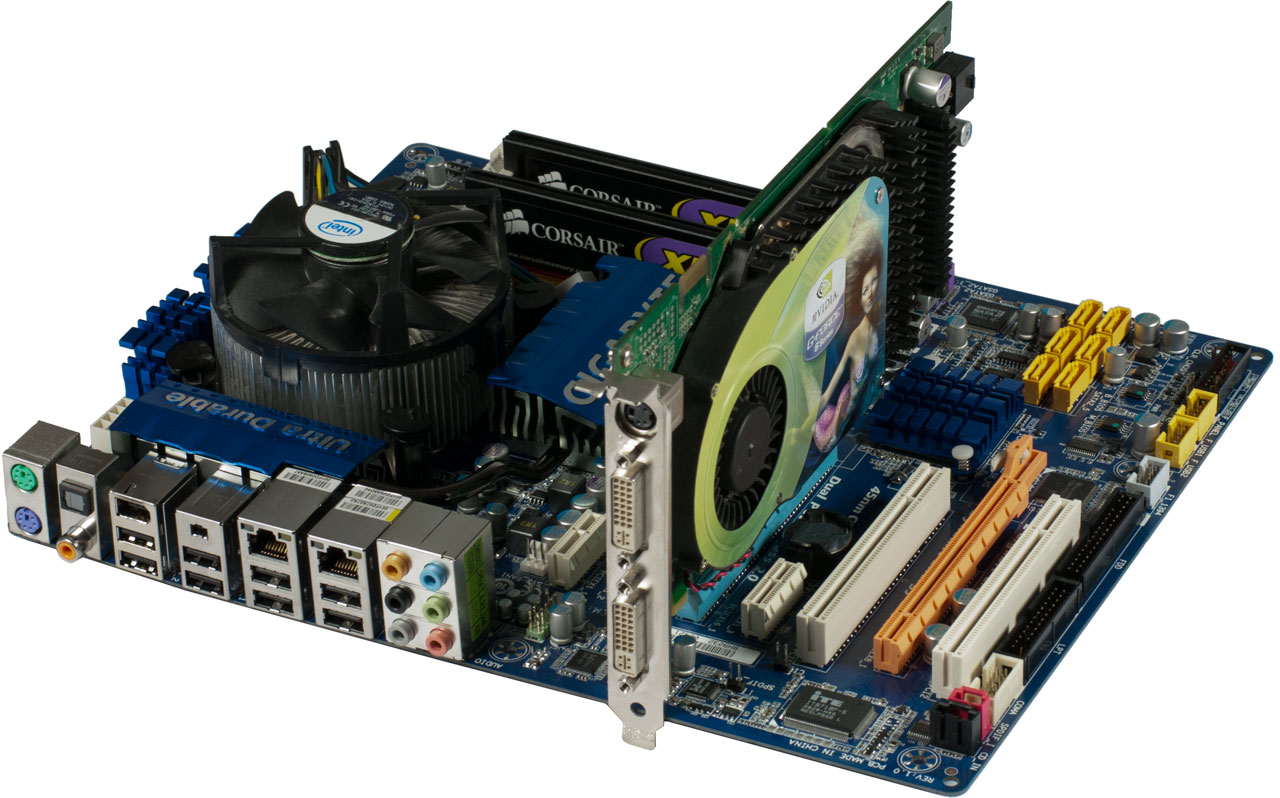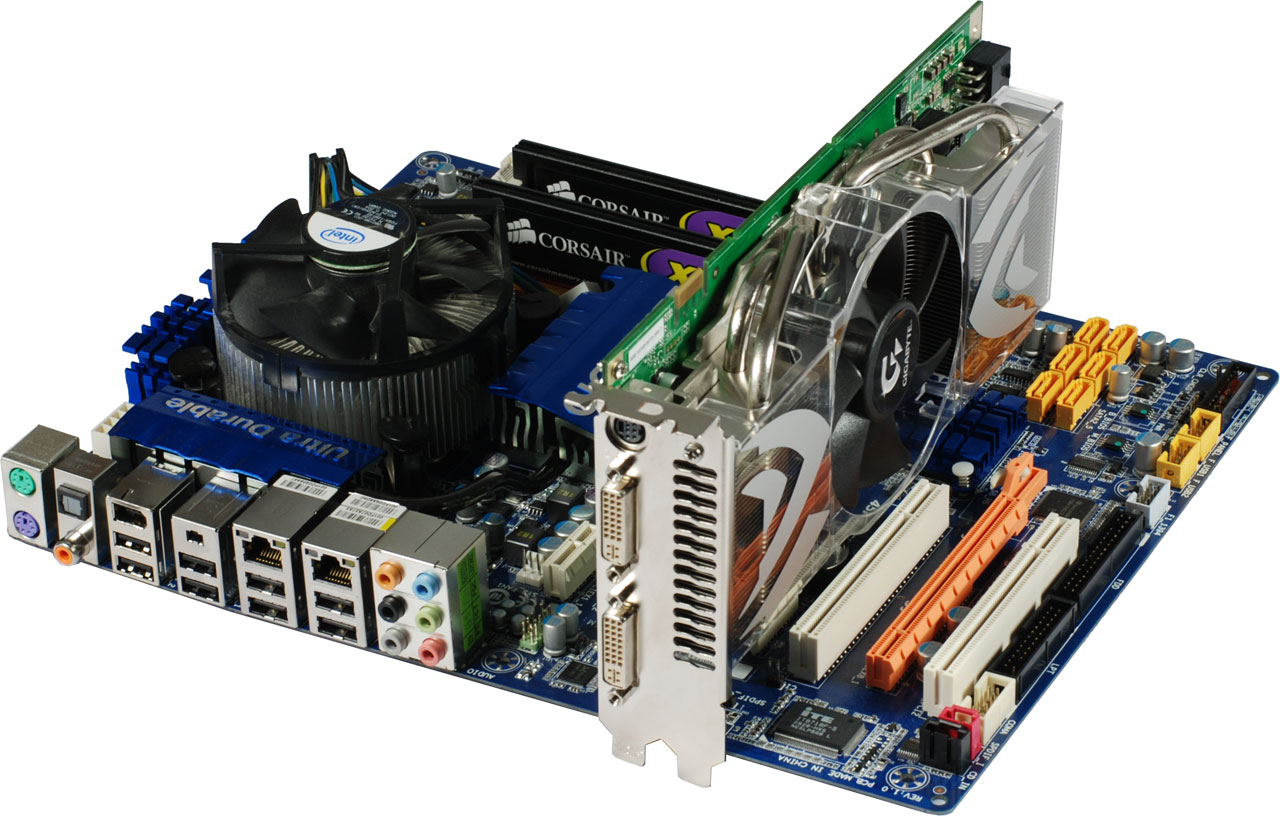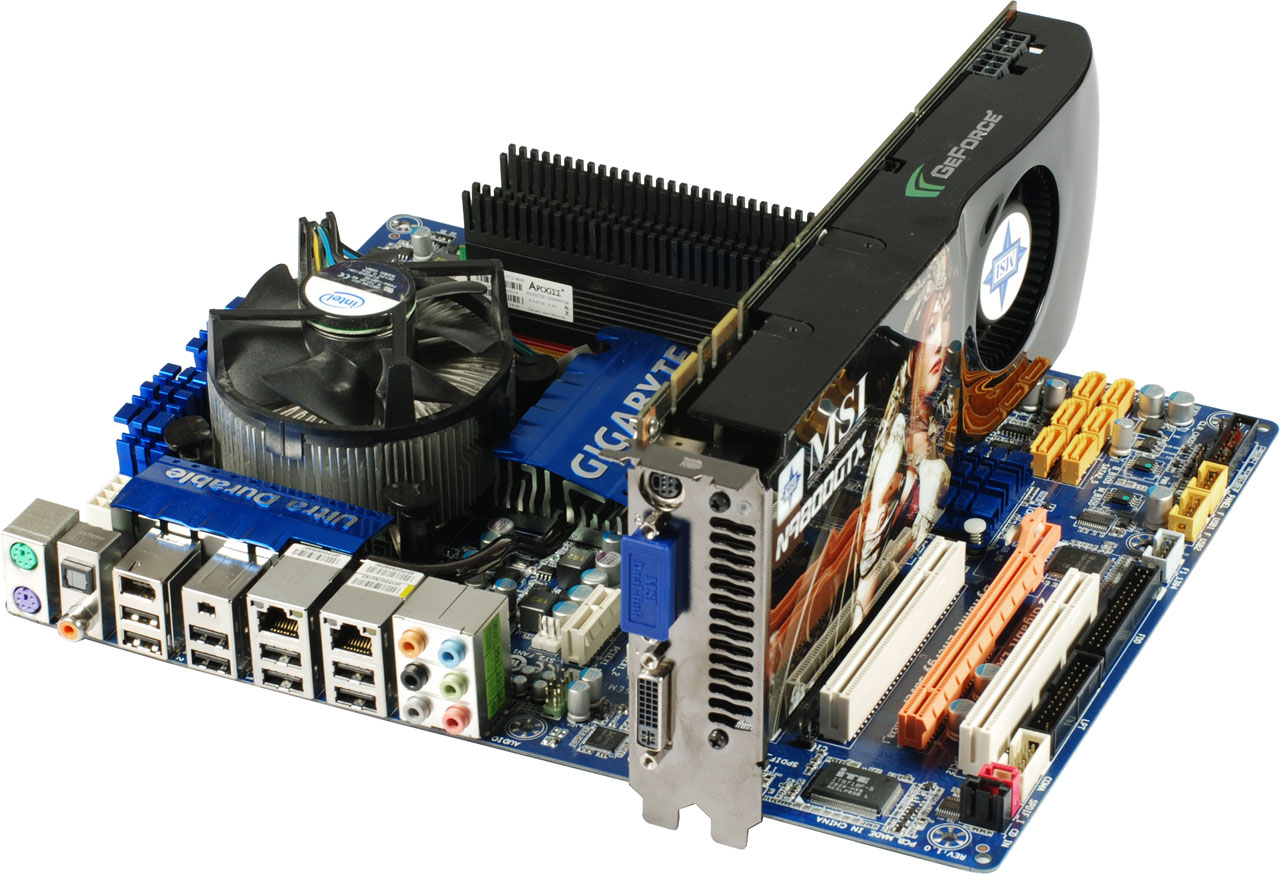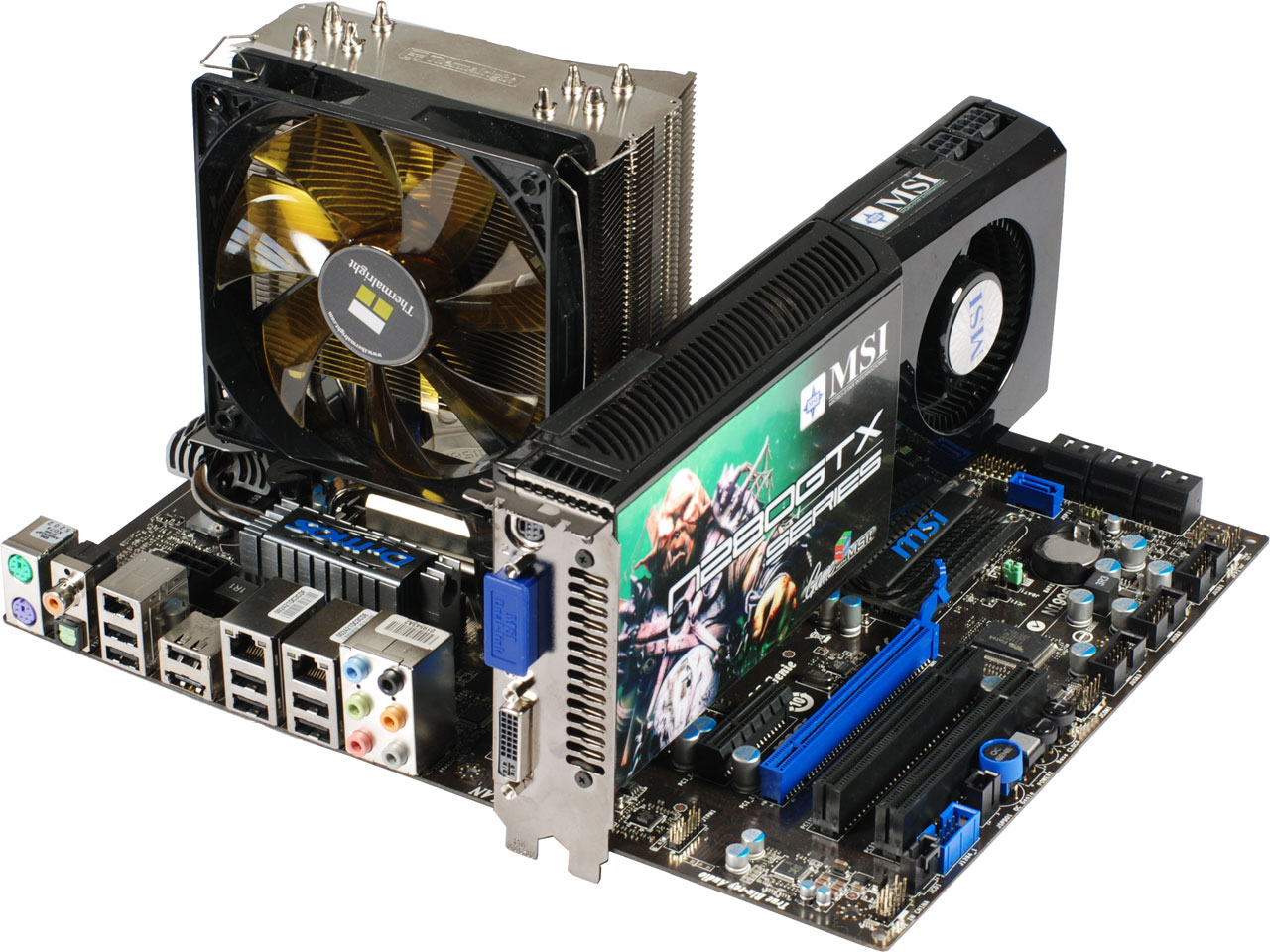Could An SSD Be The Best Upgrade For Your Old PC?
It's a foregone conclusion that SSDs are must-haves in performance-oriented PCs, but our testing reveals that solid-state drives are reasonable upgrades in older mainstream machines, too. We build three old boxes to gauge the impact of an SSD on each.
System Configurations: PCs From 2005 To 2010
We decided to build a few systems representing hardware from 2005, 2006, 2008, and 2010, which could then be upgraded with an SSD. These systems all started with a conventional hard drive, but for the sake of simplicity and to cut down on install times, we used the same motherboard and chipset for the 2005, 2006, and 2008 systems.
That created one artifact, though. First, the configurations from 2005 and 2006, which center on Pentium 4 660 and Core 2 Duo E6700 processors, respectively, don't actually use a storage controller from the same era, as the P45/ICH10R combo wasn't available back then. Fortunately, it's completely appropriate for the 2008-era build. But because the ICH10 controller didn't dramatically alter performance or functionality compared to the ICH7 or ICH8, those two configurations shouldn't be affected.
The 2005 PC is based on an old-school Pentium 4 processor. We're using a Pentium 4 660 here, centering on the notorious 90 nm Prescott core, running at 3.6 GHz, and armed with 2 MB L2 cache. It was the first processor to drop into the LGA 775 interface. It was a single-core CPU, but thanks to Intel’s Hyper-Threading feature, it facilitated a pair of logical processors to purportedly improve utilization of available execution resources. Of course, at the time, Hyper-Threading didn't always perform as advertised, as most applications still weren't threaded.
Compared to today’s 3.6 GHz processors, the Pentium 4 is comparatively ancient, and it required a lot more power to operate than one of today’s quad-core models.
This is the only one of our test configurations that we would definitely replace rather than upgrade. But it's still fast enough for Internet use and office productivity tasks. We paired it with 2 GB of DDR2 memory, a GeForce 6800 GT graphics card, and a 300 GB Spinpoint T133 hard drive.
Intel's turnaround started in 2006, and the company reclaimed its performance and efficiency crowns from AMD. Our system build consists of a Core 2 Duo E6800 processor based on the 65 nm Conroe core (Game Over? Core 2 Duo Knocks Out Athlon 64) with 2 GB of DDR2 RAM, an Nvidia GeForce 7800 GTX graphics card (Nvidia's GeForce 7800 GTX 512 New Graphics Champion) and another Spinpoint T133 drive (this time with 400 GB of capacity and slightly improved performance).
The Core 2 generation dropped the mainstream processors’ thermal envelope from 115 W (on the Pentium 4 Prescott) to only 65 W, while simultaneously introducing much better performance per clock and two processor cores. Core 2 also was the first desktop CPU to feature an on-die L2 cache that was shared between the two cores.
Get Tom's Hardware's best news and in-depth reviews, straight to your inbox.
In 2008, Intel put a significant emphasis on its Core 2 Quad processors with four processing cores. However, we decided to use a dual-core 45 nm CPU (Wolfdale Shrinks Transistors, Grows Core 2), which, at the time, offered great performance and even better power efficiency. To this platform we added a GeForce 9800 GTX (Nvidia GeForce 9800 GTX Review), 4 GB of DDR2 memory, and a 1 TB Spinpoint F1 drive (Samsung Spinpoint F1 HDDs: New Winners?).
The 2010 PC is based on a 45 nm Lynnfield-based design; specifically, the Core i5-750 (Intel Core i5 And Core i7: Intel’s Mainstream Magnum Opus). This 2.66 GHz quad-core model is no longer the latest and greatest mid-range chip, but it's still representative of last year. At this point, we naturally had to upgrade from the LGA 775 motherboard to an LGA 1156-capable platform. We also installed 8 GB of DDR3 RAM, a GeForce GTX 280 card and a Spinpoint F3R 1 TB drive, which offers more performance than the Spinpoint F1.
Current page: System Configurations: PCs From 2005 To 2010
Prev Page Upgrading? An SSD Might Make Sense Next Page Getting Replaced: Several Generations Of Hard Drives
Patrick Schmid was the editor-in-chief for Tom's Hardware from 2005 to 2006. He wrote numerous articles on a wide range of hardware topics, including storage, CPUs, and system builds.
-
MAGPC SSD is just too exaggerated, yes it is faster than HDD and may be more reliable but that doesn't justify its price.Reply
Waiting until it is price gets reasonable. -
mayankleoboy1 ReplyThe conclusions we're drawing relate to the mainstream folks trying to get more life from an already-aging box
since its for mainstream, i would have liked a subjective test where some 'average' folks, doing 'average' tasks, would use the machines with/without SSD's, and rate the perceived speed on a scale of 1=10.
those should have been included as well. most people "feel" the speed, rather than benchmark it. -
Please do a test with a Pentium 3 + KingSpec PATA SSD.Reply
I'm very curious about the results. My Dell Lat C400 is chugging along just fine on Windows 7 but I believe a SSD would greatly improve performance. -
I recently bought a Transcend 32GB SSD to be my Boot Drive in my 5+yr old system- Athlon64 3200+ (Venice) S939 , Gigabyte GA-K8N51PVMT-9 ( Geforce 6150), 2 Gb DDR400, WIN7 SP1.Reply
I do not see that the SATA controller mentions AHCI in the device manager tab, however when I run the TRIM check commnand through CMD, it returns a "enabled" reply. Also,have made the necessary registry changes to ensure that AHCI is enabled. There is however no option in the MB bios to set AHCI.
So is my drive configured with TRIM enabled or not? -
buxx I wish I knew the answer to your question too. I have a Dell Dimension XPS600 which I would love to put an SSD into, just as this article suggests. However I can't find any mention of AHCI in the BIOS, manuals or anywhere on the web. Hard to say if it's present, but you would guess not, if they don't mention it... right?Reply
-
compton I think that if you're trying to get more legs out of an older system, a SSD is definitely a great way to do that. Especially with laptops from the past four years -- a Core 2 Duo processor in a laptop still isn't fast, but a decent SSD will make it feel like a new system (at least in my experience) and then some. I think trying to make your Pentium 4 system better with some solid state storage is a lost cause however.Reply
MAGPCSSD is just too exaggerated, yes it is faster than HDD and may be more reliable but that doesn't justify its price.Waiting until it is price gets reasonable.
How much is reasonable? A 64GB Crucial M4 is $105... that's pretty damn reasonable to me. For that kind of money you could get a low-end mobo, an Athlon X4, or 16GB of DDR3. Upgrades don't get much more reasonable than that. But if you already have a decent, if older system, installing an SSD will make it feel like a brand new system should for the least amount of money. -
jsrudd I installed an SSD in my netbook with an 1.6ghz atom processor and it really sped things up. The computer went from unusable to fine for casual usage.Reply -
SpadeM Predictable outcome but informative article non the less. My only concern is that since you talked about mainstream pc, i didn't see any amd equipped system. This is not about AMD vs. Intel it's about storage controller performance. Thinking back, most builds I did back in the 2004 - 2006 time frame where based off nvidia + amd. This article would have painted a more complete picture if it had taken into consideration the other half of the pc landscape. In theory i guess you can argue that yes, if it is AHCI enabled then it "should" be the same outcome as the ICH scenario ... but is it for a fact?Reply -
echdskech Maybe Tom's can do double blind subjective tests like they do in Mythbusters.Reply
Spend 10 mins doing office/internet stuff on each config without knowing which is which and rank them by speed subjectively.



